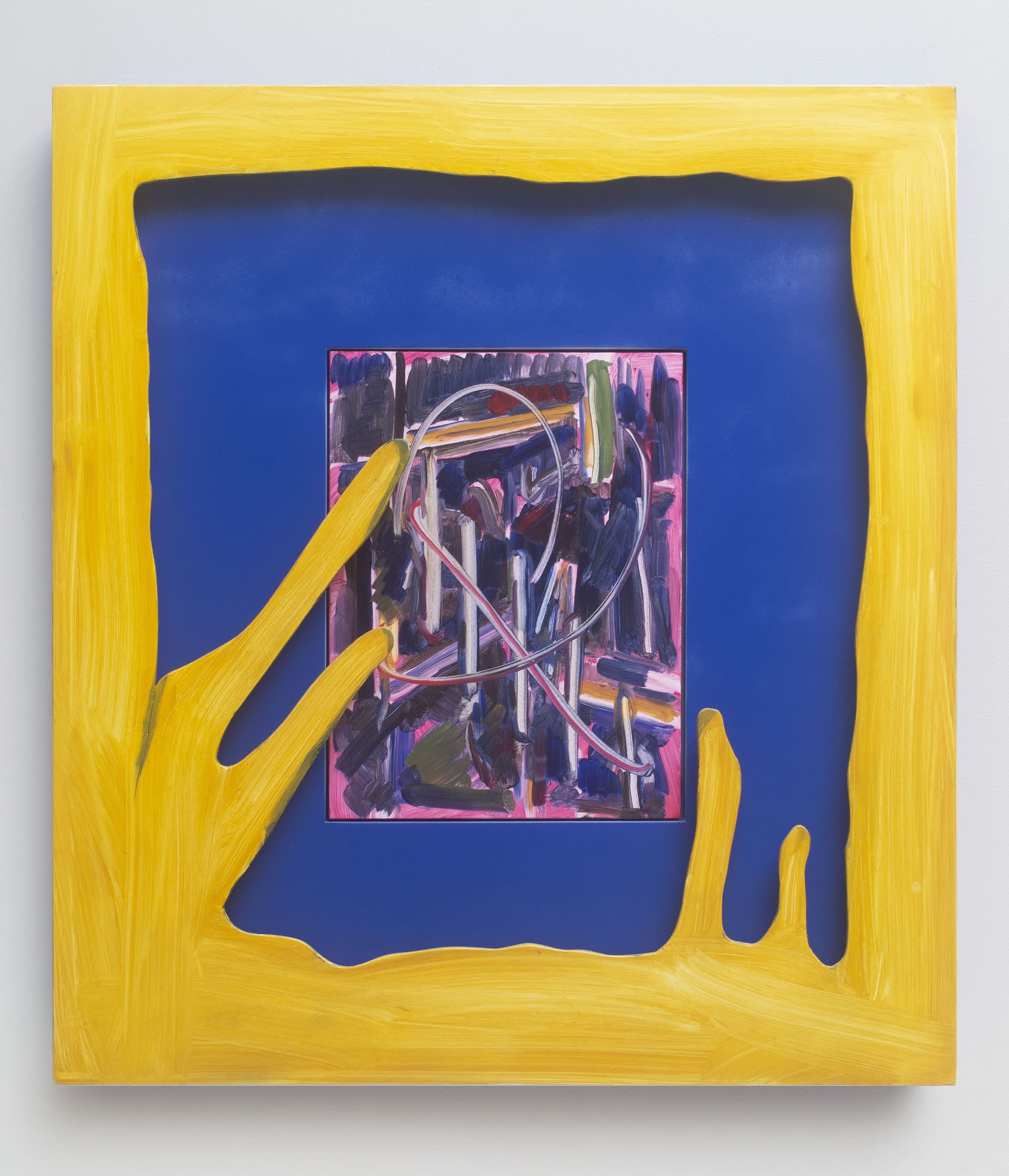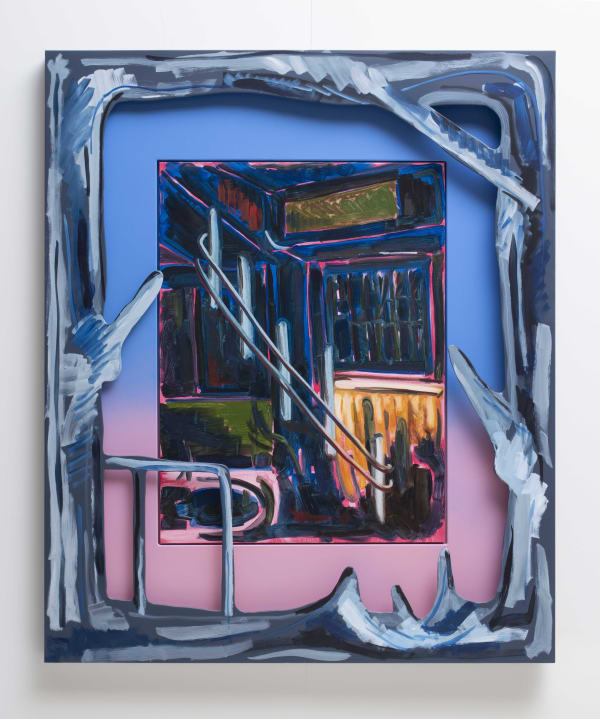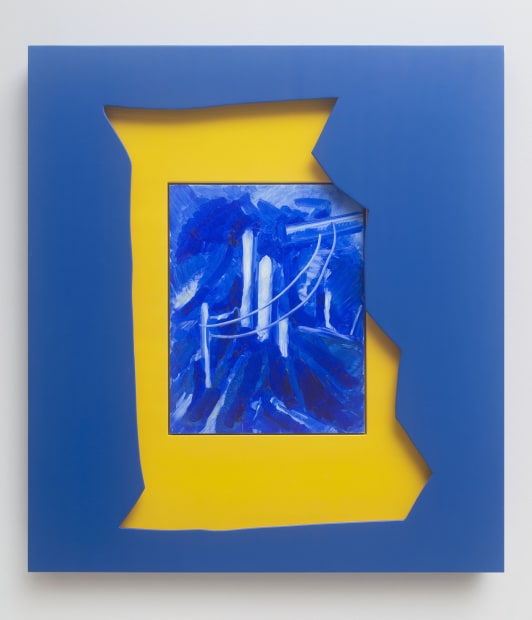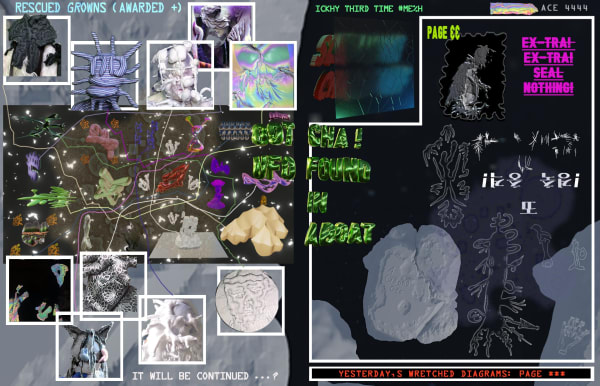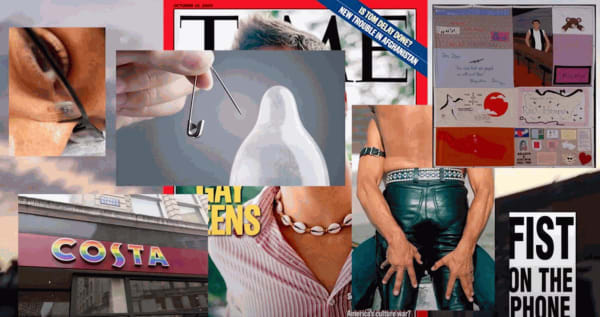-
NUKA NAYU & IAN J BROWN
IN CONVERSATION -
NN: I would like to hear what you have been up to lately since we have not seen each other for a while for many reasons, one being what is happening globally right now. You have painted so proactively since last year, and your recent Teatrinos series emerged during the current COVID trainwreck; could you talk about that? I think they are stunning by the way, and they feel to me like a critical celebration of residue from the past. I’m curious about your work’s attitudes toward thinking of a life outside of gentrification. How do you relate your work with the idea of utopia?
IJB: The pandemic has given a lot of people so much time, which has become a bit less of a commodity and therefore allowed people to use it in ways they hadn't done pre-covid. The Teatrinos, which I borrowed from Fontana, allowed me to really address time in this way. I was able to distill time and space within the painting by using the layers in the way a theatre set does, so the paintings become more about experience. This allowed me to separate the architecture as a physical form, becoming the extra layer in the paintings
The pandemic has really exasperated an already ongoing trend of the closing of queer spaces in London. This was partly to do with gentrification. Queer bars and clubs are places where bodies gather. These physical spaces are now empty. I wanted to address this craving of physical interaction within the Teatrinos. I guess the paintings delved into abstraction the more I thought about our isolation and our need to interact with each other. Maybe they are a celebration of what we’re all missing.
-
NN: I am intrigued by the way in which your paintings appear as sculptures. It is hard to get my head around the manual process and material actions that are involved in making your work, it seems to invoke the gestural make-up of labour that inhabits the painting process. You told me that you don't make sketches, and instead start working immediately on the surface, can you explain this a bit further? How do you begin a painting? And how do you navigate or transgress the parameters inherent to the medium?
IJB: Well, actually I do make sketches, they just happen during the process of making the work. For me it’s important that the work has a kind of autonomy and too much pre planning negates that. I like to have a tussle with the paintings- sometimes allowing the work to dictate where it’s going and other times I will take control. Whether it’s adding or removing paint, or cutting wood, I don’t like to have a preconceived notion of where the work will go.
I’ve always been excited by the overlap of painting and sculpture. When a painting breaks into the physical space and makes the viewer physically move around to interact with the work. There’s also that tension between crafting a three dimensional object, and then treating it as a painting.
NN: The subject of masculinity surrounds sculptures, what do you think masculinity stands for within the ambit of the sculptural experience as a queer artist?
IJB: Before the victorian era statues were predominantly of male figures, I think the historically phallic nature of figurative sculpture and the physical hands on approach to making large sculptures still has its hangover of masculinity today. But, 20thC female artists like Louise Bourgeois, Barbera Hepworth and more recently Phyllida Barlow have taken ownership of monumental sculpture. As a queer artist I am drawn more to sculpture in this context.
I come from a painting background (I studied fine art, painting) so my approach to sculpture is quite specific. I think my use of colour and maybe an element of camp, separate my work from the hetro cannon.
-

-
NN: What role does science have in your art?
IJB: Physics definitely has an influence. It’s the condition of existence that forms the backbone to my work, it plays a large part in investigating my place in the world. Quantum theory in the way it almost undermines everything we intuitively take as fact, allows a further questioning of how we truly interact with the world. I think this questioning of the world has a real affinity to me as a gay artist, where nothing is (or should be taken for granted).
NN: For your show at Hull Maritime Museum, you made this impressive structure which, among other things, playfully and impressively mimicked the anatomy of a ship - a lot of artists get help, or use technicians, and I wonder what may have informed your decision to keep to painting, given the set of skills and craftsmanship that you have…
IJB: I think painting is a craft in itself. And I do see the Hull show (a collaboration with Jonathan Baldock) in the context of painting. I did revel in the construction of it and the theatrical interaction someone can have with the architectural elements were an important part of the work. It was actually conceived with children in mind, but it became a kind of playground for adults too!
-
NN: What compels you to make your work? What do you find inspiring?
IJB: Since I was a child I’ve had an obsession with the idea of self-realisation. I remember being so awestruck by my own existence and unable to really put it into words that I decided to paint about it. This is one of the main threads that has always run throughout my work.
My early paintings were portraits of identity-less people. The act of making a soulless portrait, really playing with identity, but also gender and all the elements that give us our place in the world.
In the late 2000’s I started making paintings of mausoleums, I visited the cemetery in Milan (you have to go, it's amazing). They are these physical manifestations of a person’s life, structures which hint at class, political views and social identity.
I continue to deal with identity through architecture, my recent works have become more sculptural and more abstract as I’ve become more interested in the distillation of time and space. And I’ve literally built out from the paintings, to push and pull the viewer around the works.
-

-
READ MORE FROM NUKA


